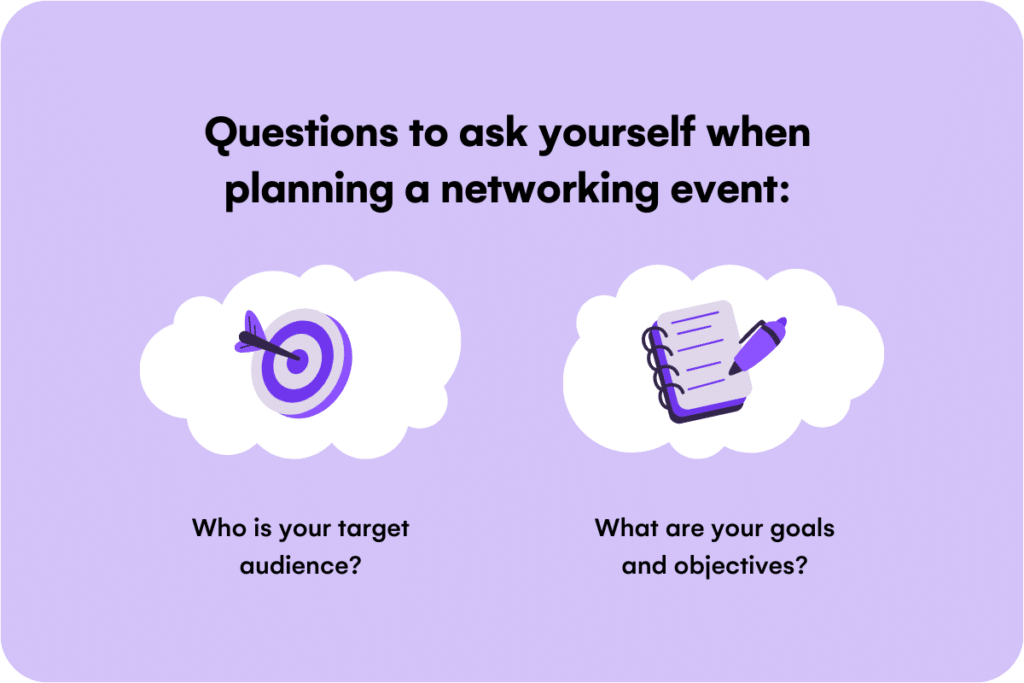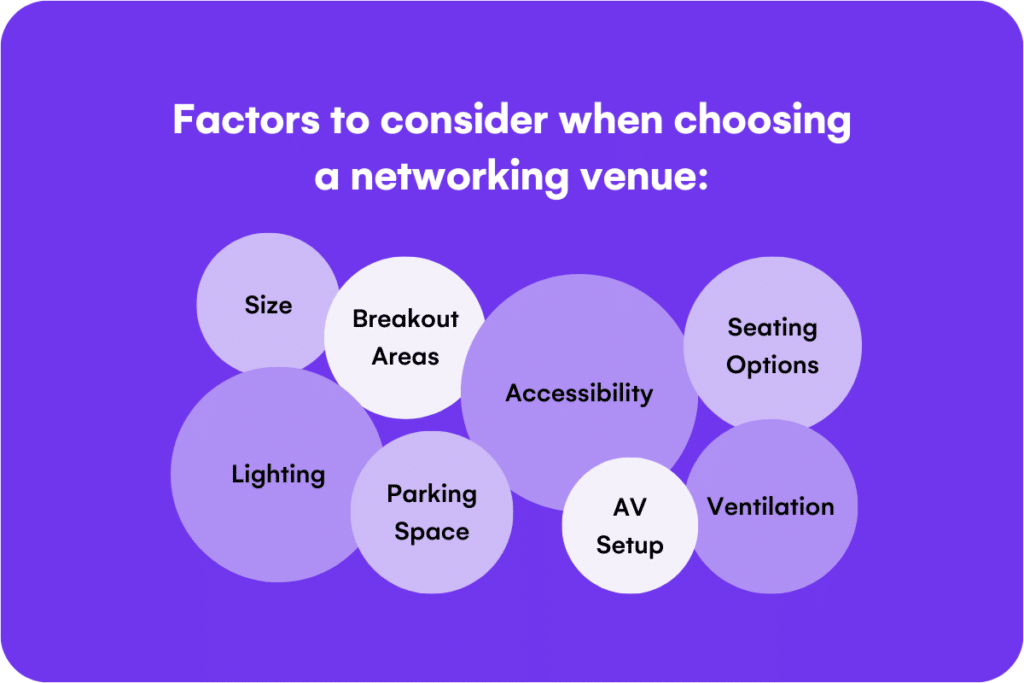
A great networking event delivers value beyond simply gathering people in a room. When executed well, these events forge professional connections, advance careers, and create business opportunities – all while strengthening your brand and supporting your exhibitors and partners.
This guide from EventsAir will show you how to plan and execute networking events that deliver real value for everyone involved, whether you’re organizing your first event or refining your approach for the next one.
What is a networking event?
A networking event brings professionals together to build connections, exchange information, and develop industry relationships. Through focused conversations, activities, and discussions, participants create potential collaborations and business opportunities.
How to host a networking event successfully
1. Define your target audience and event goals
The first step in hosting a successful networking event is defining its ideal attendees and goals. Why? An event with no clear target audience and objective is bound to be disorganized and unfocused.
Ask yourself two key questions while planning:
- Who do I want to attract to this event – B2B SaaS execs, tech founders, or professionals in a specific industry?
- What am I trying to achieve – is it generating leads, building customer connections, matching potential students with educational institutions, facilitating collaboration amongst industry professionals, or fostering mentorship relationships?

Your answers will guide every aspect of planning, from task creation and budgeting to inventory tracking, seating arrangements, and event promotion. A well-defined audience and purpose ensures a focused agenda and targeted guest list, setting the foundation for success.
2. Choose the right venue
Your venue choice can make or break your networking event. The space must be accessible, easy to navigate, and appropriately sized for your expected attendance. Good lighting and ventilation are essential for attendee comfort.
Consider how the setting will facilitate your networking goals. For intimate discussions, look for spaces with breakout areas or lounges. For larger-scale networking, ensure the layout encourages natural movement and conversation between strangers.
Key venue requirements:
- Adequate parking
- Comfortable seating arrangements
- Well-spaced aisles for easy movement
- Proper audio-visual equipment

Note: For virtual or hybrid events, EventsAir provides a virtual meeting hub with flexible networking options for all participants.
3. Create an agenda with networking opportunities
Successful networking doesn’t happen by accident – even at networking events. Design an agenda that balances structured and organic interactions.
Start with icebreakers or group activities to help attendees feel comfortable. Follow with panel discussions, workshops, or keynote speeches that provide both valuable insights and natural conversation starters. Then transition to open networking, where guests can freely exchange business cards, social handles, experiences, and ideas.
EventsAir enhances these connections through:
- Meeting Matching: Automates networking by connecting attendees with each other (or even relevant exhibitors and speakers) based on their preferences
- EventStream: A private event social network where attendees can share photos, videos, and participate in games to drive engagement.
One important thing to keep in mind when crafting these sessions is curating attendance. While open sessions can be great, it’s equally important to host sessions that are limited to certain industries, job titles, or interests.
EventsAir’s targeted networking features make this easy. Just set up the event, set up attendance parameters, and let the platform do the rest.
4. Promote the event
Remember you defined your networking event’s target audience earlier. Now it’s time to promote it, emphasizing what sets it apart from similar events and how attending will help attendees achieve their professional or business goals.
Here are some tips to get this right:
Build a dedicated website
Design a website that is visually appealing, and easy-to-navigate. Highlight your event’s selling points including networking opportunities, guest speakers, and panel discussions. Lastly, incorporate seamless event registration, including for specific activities or sessions.
Segment your audiences
Target your messaging for different groups:
- Attendees (primary audience)
- Exhibitors and sponsors
- Guest speakers
- Vendors
This segmentation enables relevant communication before, during, and after the event.
Leverage email marketing
Create neat and compelling promotional emails, including invitations, confirmations, reminders, and updates. Once you’ve done this for one event, you can use old emails as templates for future campaigns.
5. Provide clear networking guidance
While some attendees may be seasoned networkers, others might need guidance to loosen up and make meaningful connections.
To help all attendees get the most value from the event, share effective networking tips on introducing themselves, exchanging contact information, or post-event follow-up. You can even go further to include these tips in the event program or send them in a pre-event email.
Another way to provide effective networking guidance is by assigning moderators to facilitate introductions or lead icebreaker activities that can ease initial awkwardness.
6. Follow up post-event
The event doesn’t end when the attendees leave; post-event follow-up is critical to making long-lasting connections.
So, after the event, send thank-you emails to all attendees and participants. In the email, summarize key event takeaways and highlights.
If you had speakers or panelists, consider including their contact information or social media handles to encourage continued conversations.
Organize a successful networking event With EventsAir
Event management without the right platform leads to low attendance, confusing registration processes, and communication breakdowns. Speakers, attendees, and exhibitors all suffer when key tools aren’t in place to drive engagement and deliver ROI.
EventsAir provides comprehensive tools for physical, virtual, and hybrid events. Our platform offers:
- Seamless event registration with customizable workflows and multiple payment options
- Pre-event planning features for task and communication management
- Mobile app access to event agendas, speaker information, and exhibitor details
Over 11,000 event professionals in 60+ countries trust EventsAir to deliver memorable, valuable networking experiences. Ready to supercharge your events? Book a free EventsAir demo today.
Attendee Experience | Event Planning & Management | Networking
See EventsAir in action
Discover why 12,000+ event professionals trust EventsAir to deliver effortless events, every time.




